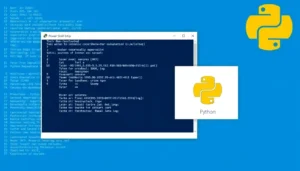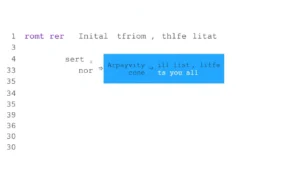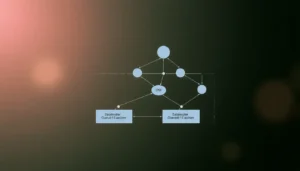BOJ Rate Hike in October? Ex-Chief Economist Cautions on Tariff Uncertainty
- THE MAG POST

- Sep 7
- 4 min read

The prospect of the Bank of Japan adjusting its monetary policy, specifically a potential rate hike in October, is currently a subject of considerable market speculation, yet this anticipation may be somewhat premature. A key complicating factor, often underestimated by market participants, is the ongoing and unpredictable nature of global trade dynamics, particularly the tariff campaigns initiated by the United States. These external economic pressures introduce a significant degree of uncertainty that makes forecasting precise policy moves exceptionally difficult. As a former chief economist at the BOJ aptly noted, the uncertainties are indeed larger than many are currently accounting for, posing a substantial challenge for policymakers aiming to make well-informed decisions within a defined timeframe.
The Unpredictable Path to BOJ Rate Adjustments
The global economic landscape is a complex tapestry, and central banks often find themselves navigating a delicate balance between fostering growth and curbing inflation. In this intricate dance, the Bank of Japan (BOJ) is currently facing a particularly challenging decision regarding potential interest rate adjustments. While some market participants are anticipating a shift in October, a closer examination reveals a far more nuanced reality, heavily influenced by external economic pressures and policy uncertainties.
Unpacking the October Rate Hike Speculation
Recent economic indicators have suggested a degree of resilience in Japan's economy, leading many economists to pinpoint October as a likely timeframe for the Bank of Japan's next interest rate increase. This optimism, however, may be overlooking a critical factor: the pervasive and unpredictable impact of global trade policies, particularly those stemming from the United States' tariff campaigns. The ripple effects of these trade disputes create a significant layer of uncertainty that complicates any precise economic forecasting.
The Shadow of Tariffs on Monetary Policy
The ongoing trade disputes, characterized by escalating tariffs, introduce a substantial degree of unpredictability into the global economic outlook. These tariffs can disrupt supply chains, influence consumer and business confidence, and ultimately affect inflation and growth trajectories. For a central bank like the BOJ, which relies on stable economic conditions to make informed policy decisions, these external shocks pose a significant challenge.
Toshitaka Sekine, a former chief economist at the BOJ, articulated this concern, suggesting that the current level of uncertainty stemming from these trade tensions is likely underestimated by market observers. His perspective highlights the difficulty central bankers face when attempting to gauge the long-term economic consequences of such policies within a tight timeframe.
Forecasting the Unforeseeable
Sekine's candid assessment underscores the inherent difficulty in predicting the BOJ's precise monetary policy stance. He noted that if he were still in his former role, he would be hesitant to commit to a specific policy outcome by October due to the lingering unknowns surrounding the tariffs' full impact. This sentiment reflects a broader challenge in monetary policy formulation when confronted with rapidly evolving geopolitical and trade dynamics.
While Sekine did not entirely dismiss the possibility of a rate hike, he emphasized that a range of factors, including currency exchange rates, would be considered. However, the core message remains: definitively asserting that economic risks have sufficiently subsided by October to warrant a policy shift would be a challenging, if not untenable, position for the BOJ to adopt.
Navigating the Labyrinth of Economic Indicators
The decision-making process for a central bank is akin to navigating a complex labyrinth of economic data. Each indicator, from inflation rates and employment figures to currency fluctuations and international trade balances, offers a piece of the puzzle. However, when external factors like trade wars introduce significant noise, these pieces can become distorted, making it exceedingly difficult to assemble a clear picture.
The Interplay of Exchange Rates and Monetary Policy
Foreign exchange rates represent a crucial variable in the BOJ's policy considerations. A strengthening yen, for instance, can dampen export competitiveness and potentially cool inflationary pressures, while a weakening yen can have the opposite effect. The volatile nature of exchange rates, often influenced by global economic sentiment and trade policy shifts, adds another layer of complexity to the BOJ's deliberations.
The interplay between these exchange rate movements and the broader economic objectives of price stability and sustainable growth means that any policy decision must carefully weigh these interconnected factors. It is this intricate web of influences that makes a definitive October rate hike prediction a precarious one.
Conclusion: A Prudent Approach Amidst Uncertainty
In conclusion, while market speculation may point towards an October rate adjustment by the Bank of Japan, the prevailing global economic uncertainties, particularly those driven by trade policies, present a formidable challenge to such predictions. The BOJ, like any prudent central bank, must prioritize a thorough assessment of risks and rely on a stable economic outlook before enacting significant policy changes. The path forward for Japanese monetary policy remains contingent on the resolution of these external economic pressures and the clarity of the domestic economic landscape.
Aspect | Details |
Key Speculation | Bank of Japan (BOJ) rate hike in October |
Influencing Factor | U.S. President Donald Trump's tariff campaign |
Expert Opinion (Toshitaka Sekine, former BOJ Chief Economist) | Market participants are underestimating the degree of uncertainty caused by tariffs. |
Difficulty in Prediction | Determining the full impact of tariffs by October is challenging for policymakers. |
Additional Considerations for BOJ | Foreign exchange rates and other economic factors. |
Overall Outlook | Difficult for authorities to claim economic risks have receded enough by October for a rate hike. |






















































Comments